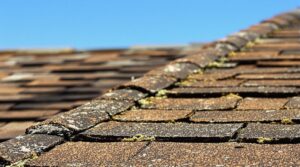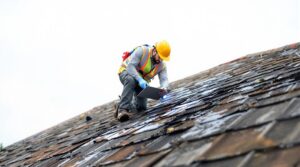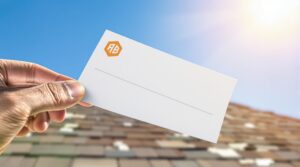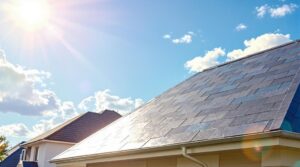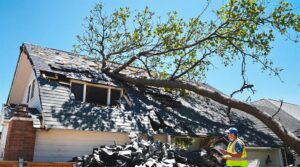Want to slash your home insurance costs? A new roof might be your golden ticket! Think of it as giving your home a protective helmet – insurance companies love that kind of responsibility. You could see your premiums drop anywhere from 5% to 35%, potentially putting hundreds of dollars back in your pocket each year.
Location plays a huge role in your savings potential. Living in hurricane-prone Florida? Your insurance company will likely offer bigger discounts than if you're in mild-weathered California. It's all about risk management!
The real magic happens when you choose impact-resistant Class 4 materials – they're like armor for your house. These tough materials can handle whatever Mother Nature throws at them, and insurers reward that resilience handsomely. Metal roofs, in particular, are the superheroes of the roofing world, offering top-tier protection against wind and hail.
Ready to maximize your savings? Here's what you need to do:
- Chat with your insurance provider about their specific roofing requirements
- Partner with certified roofing contractors who understand insurance standards
- Document everything about your new roof installation
- Ask about special discounts for upgraded materials
Remember, this isn't just about immediate savings – you're investing in your home's long-term protection while keeping more money in your wallet. Isn't it nice when being practical pays off?
Key Takeaways
Looking to Slash Your Home Insurance Costs? A New Roof Might Be Your Answer!
Think of your roof as a protective shield – the better it is, the more your insurance company will reward you. You could watch your premiums drop by 5-35%, with most homeowners pocketing around 15-25% in savings.
What does this mean for your wallet? If you're paying $2,000 yearly for home insurance, you might save $300-500 – that's enough for a nice weekend getaway! Living in storm-prone areas like Florida? Your savings could climb even higher.
Want to maximize those discounts? Consider investing in a metal roof or Class 4 impact-resistant materials. These tough-as-nails options can earn you the juiciest premium cuts, up to 35%. It's like giving your home a suit of armor while keeping your insurance costs in check.
Location plays a huge role in your potential savings. Coastal dwellers, you're in luck! Your area typically qualifies for premium reductions between 20-35%, since your home faces more weather challenges.
Once you've installed your new roof, don't expect instant savings. Insurance companies usually process these adjustments within 5-60 days after you submit your documentation. Think of it as a short wait for a long-term reward!
The Direct Connection Between Roof Age and Insurance Costs
The age of a roof directly influences insurance premiums, with older roofs commanding higher rates due to their increased risk of damage and failure. Insurance adjusters evaluate roof age as a critical factor in premium calculations, often implementing significant rate adjustments at specific age thresholds, particularly around the 10-year mark.
Homeowners can achieve substantial savings of 5% to 35% on their premiums by installing a new roof, with variations based on material selection and geographical location.
The choice of roofing materials plays a vital role, as more durable options typically result in lower insurance costs. Regular professional inspections, especially for roofs exceeding 10 years, are essential for maintaining coverage and identifying potential issues before they impact insurability or lead to premium increases. Selecting impact-resistant shingles can qualify homeowners for special insurance savings while providing superior protection against severe weather damage.
Key Factors That Impact Premium Reductions
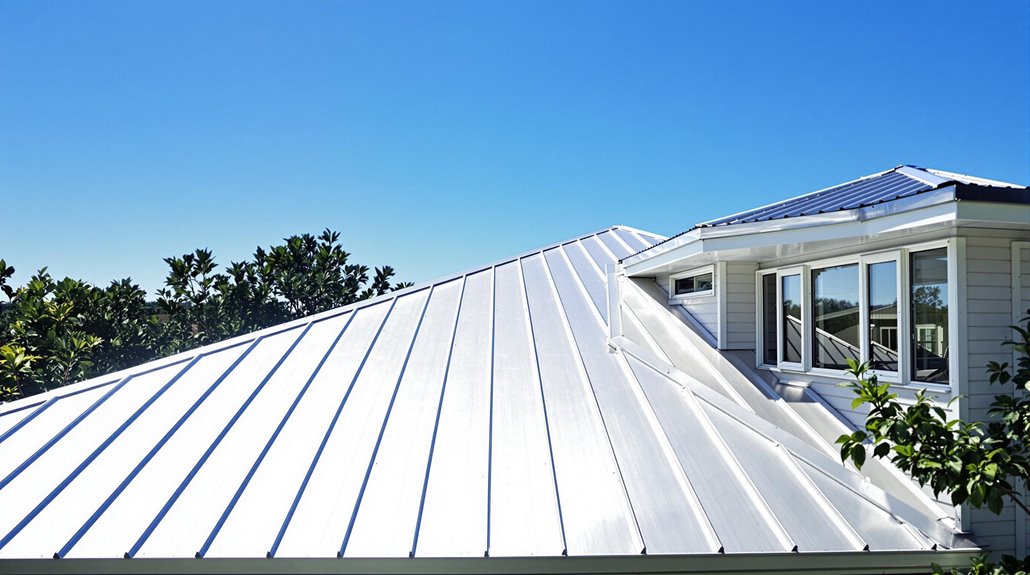
Several key factors influence the extent of premium reductions homeowners can achieve when investing in a new roof, with material selection and installation methods playing pivotal roles. Premium factors include the durability of materials chosen, such as metal roofing or synthetic shakes, which demonstrate superior resistance to weather damage and fire.
Insurance eligibility for discounts heavily depends on proper installation techniques that meet local building codes and wind mitigation standards. The implementation of secondary water resistance and sealed roof decks can qualify homes for substantial savings.
Geographic location also affects potential reductions, as areas prone to severe weather may require specific roofing materials and installation methods. Additionally, voluntary roof replacements typically result in better premium outcomes compared to mandatory replacements following damage. Impact-resistant windows paired with a new roof can maximize insurance premium savings through enhanced storm protection.
Understanding Potential Savings on Your Insurance
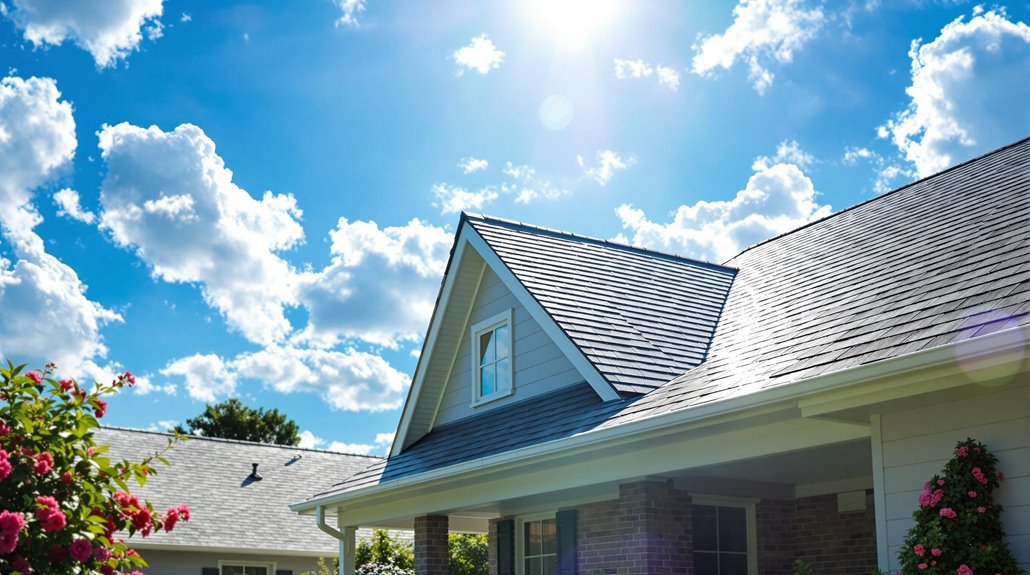
Installing a new roof can result in insurance premium reductions ranging from 15% to 25% on average, with some homeowners seeing savings up to 35% depending on their location and chosen materials.
For a typical homeowner paying $2,000 annually in insurance premiums, this translates to potential savings between $300 and $500 per year.
The long-term cost benefits become particularly significant in storm-prone regions, where annual savings can reach $1,000 in Texas and up to $1,200 in Florida, making a new roof installation a strategic investment for reducing insurance costs.
Modern roofs built to current construction codes can provide additional savings of 15-20% through improved durability and weather resistance.
Premium Reduction Percentages Expected
Homeowners contemplating a new roof can expect significant insurance premium reductions ranging from 5% to 35%, depending on factors like location, material selection, and specific insurer policies.
State Farm customers typically see percentage breakdowns between 15% to 25%, with savings calculations varying based on geographical location and risk assessment.
Key factors influencing premium reductions include:
- Impact-resistant Class 4 rated roofs offer up to 35% savings in storm-prone regions
- Urban areas receive more modest discounts of 10-15%
- Coastal and high-risk weather zones may qualify for 20-35% reductions
- Combined discounts with impact-resistant materials add another 10%
- Voluntary upgrades often qualify for better rates than disaster-related replacements
Premium adjustments typically process within 5-60 days after proper documentation submission and verification.
Working with public adjusters during claims processes can increase settlement amounts by 30-50% when filing roof-related insurance claims.
Long-Term Cost Benefits Analysis
Understanding the long-term cost benefits of a new roof requires careful analysis of multiple financial factors beyond the initial investment. When evaluating comparative costs, homeowners should consider how geographical location, material choices, and weather risks affect annual projections of insurance savings. Working with licensed public adjusters can increase insurance claim settlements by 30-50% when negotiating coverage terms for new roofs.
| Factor | Short-Term Impact | Long-Term Benefit |
|---|---|---|
| Roof Material | Higher upfront cost | 15-30% premium reduction |
| Age Upgrade | Installation expense | Reduced claim likelihood |
| Weather Protection | Safety certification costs | Enhanced coverage terms |
| Maintenance | Regular inspection fees | Sustained premium discounts |
The analysis should account for the cumulative effect of insurance savings against installation costs. Homes in high-risk weather areas may experience more substantial long-term benefits, particularly when upgrading from considerably older roofs to modern, impact-resistant materials. Regular maintenance guarantees continued premium reductions while protecting the investment's value.
How Different Roofing Materials Affect Your Rates
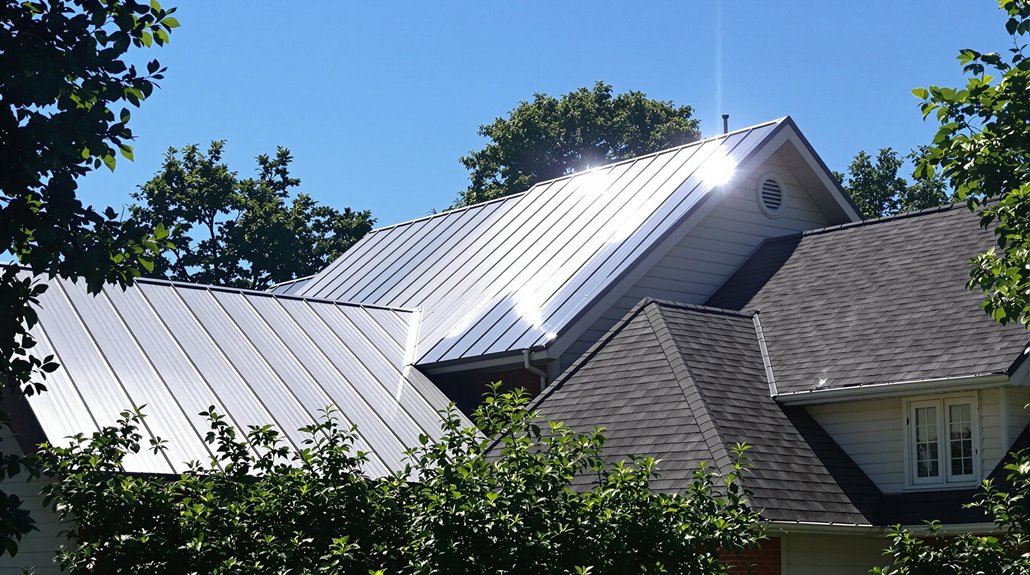
When choosing between metal and asphalt roofing materials, homeowners must weigh the higher upfront costs of metal against its superior durability and potential for greater insurance savings.
Impact-resistant materials, whether metal or specialized asphalt shingles, can qualify for significant insurance discounts due to their enhanced protection against hail and storm damage.
Insurance companies typically offer the most substantial premium reductions for Class 4 impact-resistant roofing materials, which can offset the initial installation costs over time through lower insurance rates and reduced maintenance expenses.
With RCV coverage policies, homeowners can ensure full replacement value for their premium roofing materials minus only the deductible if damage occurs.
Metal Versus Asphalt Options
Insurance carriers draw clear distinctions between metal and asphalt roofing materials when calculating premium rates, with metal roofs often commanding more favorable terms.
Material durability and weathering performance substantially impact risk assessment, with metal roofing typically earning premium discounts between 10% and 35%.
Key differences between metal and asphalt roofing affecting insurance rates include:
- Metal roofs demonstrate superior resistance to extreme weather conditions, including high winds and hail
- Asphalt shingles may qualify for discounts if certified as hail-resistant
- Metal roofing provides enhanced fire protection, particularly valuable in wildfire-prone regions
- Asphalt roofs generally require more frequent maintenance and replacement
- Age and condition of asphalt roofing directly influence premium calculations
While metal roofs demand higher initial investment, their extended lifespan and reduced maintenance requirements often justify the cost through long-term insurance savings.
Insurance companies factor in that asphalt shingles have a 5% annual depreciation rate when determining coverage and premiums.
Impact-Resistant Materials Worth Cost
Investing in impact-resistant roofing materials delivers substantial insurance premium reductions while providing superior protection against severe weather events. Class 3 and 4 rated materials, available in various material options including asphalt, metal, plastics, and rubber compounds, can yield premium savings up to 35% through providers like State Farm and USAA.
The initial cost of impact-resistant roofing typically pays for itself within 5-7 years through insurance discounts and reduced maintenance expenses. These materials come with 30-50 year warranties and demonstrate superior resistance to hail, wind, and flying debris.
To maintain favorable insurance ratings and ongoing discounts, homeowners must conduct regular inspections and promptly address any repairs. Insurance companies require proper documentation and validation from adjusters to qualify for premium reductions. Public claims adjusters can help document roof improvements and negotiate higher premium discounts with insurance companies.
Essential Maintenance Steps to Keep Premiums Low
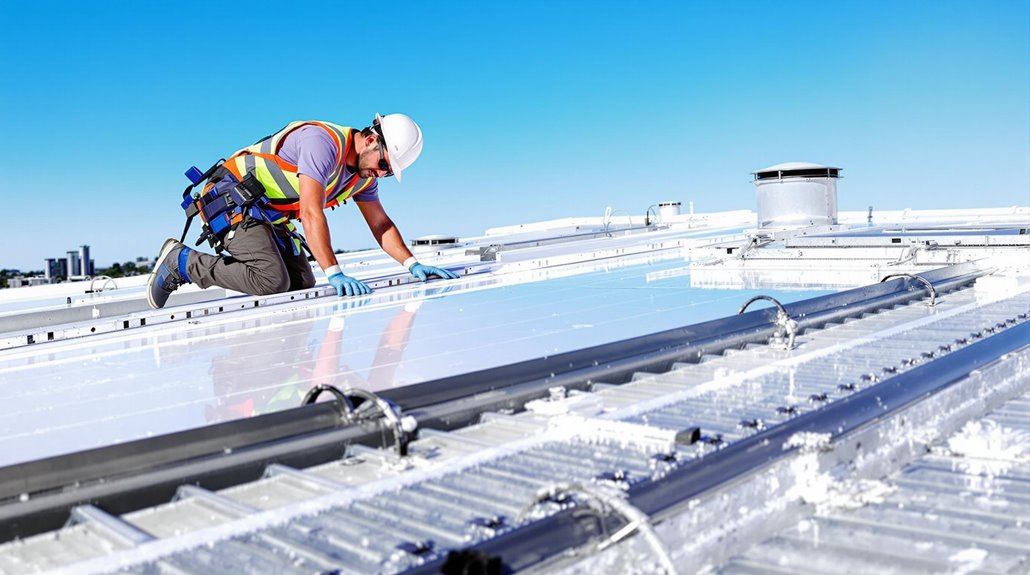
Smart homeowners recognize that maintaining their roof is a critical factor in keeping insurance premiums low.
Implementing regular maintenance and preventive scheduling through professional inspections helps identify potential issues before they become costly problems. Insurance companies often reward proactive maintenance with reduced premiums and more favorable claims processing.
Key steps to maintain lower premiums include:
- Conducting regular roof inspections to document maintenance history
- Upgrading to code-compliant and weather-resistant materials
- Installing secondary water barriers to reduce water damage claims
- Strengthening roof-to-wall connections for enhanced structural integrity
- Addressing repairs promptly with high-quality materials
These investments typically cost between $5,000 and $10,000 but can result in substantial long-term savings, with some homeowners reporting up to 75% reduction in insurance premiums after implementing proper maintenance measures.
Installing white roofing materials can improve energy efficiency and reduce cooling costs by keeping temperatures nearly 7% lower during peak hours.
Regional Weather Considerations and Premium Changes

While proper maintenance plays an essential role in managing insurance costs, regional weather patterns substantially influence premium rates and coverage options. Advanced weather mapping technologies enable insurers to assess climate-related risks with unprecedented precision, establishing direct premium correlations with geographic locations and weather event frequencies.
Areas prone to natural disasters, such as Florida, Louisiana, and Texas, consistently face higher insurance costs due to hurricane risks, while Western states experience premium increases from wildfire threats.
Climate change has intensified these regional variations, leading insurers to require larger capital reserves and increase premiums accordingly. Properties in high-risk zones may face stricter requirements for roof materials and designs, with insurers offering incentives for weather-resistant features that minimize potential damage from region-specific weather events. Research shows catastrophe claims are projected to double every decade due to the increasing impact of climate change on weather patterns.
When Replacing Your Roof Makes Financial Sense
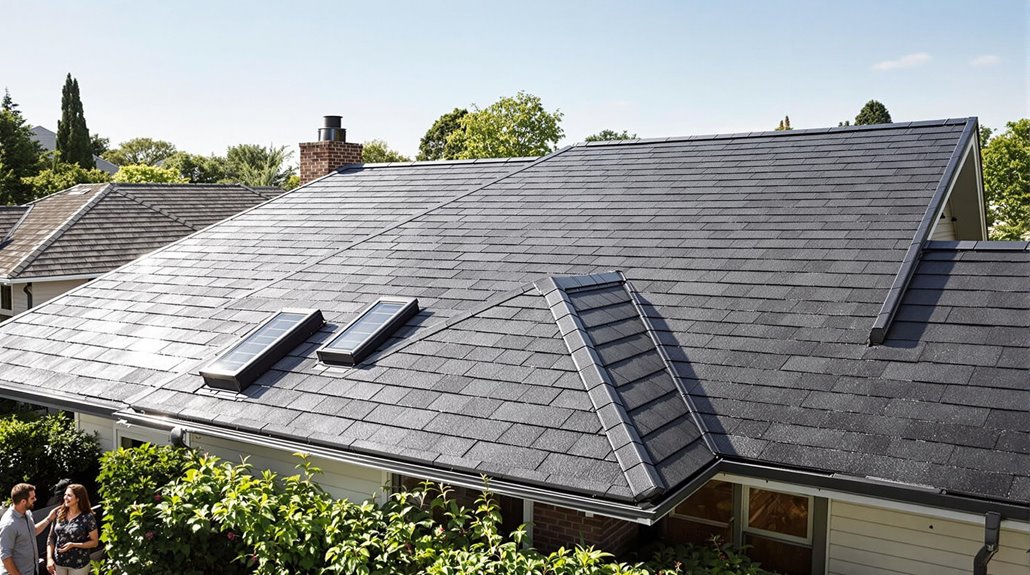
Determining the ideal time to replace a roof requires careful analysis of multiple financial factors, including insurance premium savings, property value implications, and long-term maintenance costs.
Financial planning for roof replacement becomes prudent when considering both immediate benefits and future returns on investment strategy.
Key factors that indicate roof replacement makes financial sense include:
- Insurance premium reductions of up to 35% with Class 4 impact-resistant materials
- Potential market value increase of $12,000-$15,000
- Available energy efficiency savings through modern roofing materials
- Cumulative insurance premium savings over 5-10 years
- Extended warranty protection reducing long-term repair costs
The decision to replace a roof should align with thorough property management goals, taking into account current maintenance expenses, insurance costs, and the potential for significant long-term savings through reduced premiums and improved energy efficiency.
Maximizing Insurance Savings With Building Code Compliance

Understanding building code compliance plays an essential role in maximizing insurance savings for homeowners seeking to reduce their premiums through roof replacement. Areas with stringent building codes typically experience lower insurance claims following disasters, which translates into reduced premium costs for property owners.
The regulation benefits extend beyond basic safety standards, directly impacting insurance calculations. Homeowners who guarantee their new roofs meet or exceed current building codes can potentially secure premium reductions ranging from 5% to 35%.
Adding building code coverage to standard policies provides additional financial protection against future compliance requirements. This optional coverage helps offset the costs of upgrading to current building standards during repairs, preventing unexpected out-of-pocket expenses while maintaining property value and safety standards.
The Benefits Of Consulting A Public Adjuster

Public adjusters bring invaluable expertise to insurance claims, offering objective damage assessments and professional negotiation skills that protect policyholders' interests.
Their involvement streamlines the claims process through efficient documentation management and direct communication with insurance companies, reducing the burden on property owners.
Studies indicate that claims handled by public adjusters typically result in higher settlements compared to those managed by policyholders alone, making their services a strategic investment despite the associated fees.
Expertise In Insurance Claims
Insurance experts consistently recommend consulting a public adjuster when filing complex roof-related claims, as these professionals bring extensive knowledge of policy interpretation and claims procedures to the table.
Their policy expertise guarantees thorough coverage analysis, while their claim efficiency streamlines the entire process.
Public adjusters provide essential value through:
- Detailed interpretation of policy fine print and coverage limitations
- Professional documentation of damage assessments and repair estimates
- Strategic negotiation with insurance carriers to maximize settlements
- Meticulous organization of claim-related paperwork and evidence
- Compliance management with state-specific insurance regulations
Their specialized knowledge helps policyholders navigate complex claims processes while avoiding common pitfalls that could reduce settlement amounts.
This expertise proves particularly valuable when dealing with significant roof damage claims that require thorough documentation and skilled negotiation.
Objective Damage Assessment
When evaluating roof-related insurance claims, a thorough and objective damage assessment performed by a public adjuster serves as the cornerstone of successful claim resolution. Through complete documentation and detailed assessment, public adjusters conduct systematic evaluations that include photographs, videos, and written reports to verify the extent of roof damage.
These professionals perform thorough inspections covering both exterior and interior impacts, ensuring damage verification through precise data collection and on-site examinations. Their expertise enables accurate estimation of repair costs and determination of liability when applicable.
Streamlined Claim Process
Building upon the foundation of thorough damage assessment, engaging a public adjuster offers homeowners significant advantages in streamlining their insurance claims.
These professionals optimize claim workflow and enhance process efficiency by managing all aspects of the insurance claim from start to finish.
- Handles all communication with insurance companies, reducing policyholder stress and confusion
- Guarantees accurate documentation and timely submission of required materials
- Coordinates with contractors and vendors for complete damage evaluation
- Tracks critical deadlines and expedites claim resolution
- Provides expert guidance throughout the entire claims process
Public adjusters leverage their extensive training and experience to navigate complex claims procedures while allowing homeowners to focus on recovery.
Their complete management approach minimizes disruptions and accelerates the path to claim settlement, making them valuable partners in the insurance claim process.
Higher Claim Payouts & Settlements
Success in securing maximum insurance settlements often hinges on professional representation, making public adjusters invaluable assets for maximizing claim payouts. Through expert damage assessment and skilled settlement negotiation, public adjusters guarantee comprehensive documentation of all losses, leading to higher compensation for property owners.
| Benefit | Impact |
|---|---|
| Expert Assessment | Thorough identification of all damages, reducing missed claims |
| Professional Negotiation | Strategic advocacy leading to ideal settlement outcomes |
| Policy Knowledge | Maximization of benefits through detailed policy interpretation |
Their expertise in damage maximization, combined with in-depth knowledge of insurance policies and procedures, enables public adjusters to secure settlements that frequently exceed what property owners might obtain independently. By leveraging their professional expertise and understanding of insurance company tactics, they effectively advocate for fair and thorough claim resolutions.
About The Public Claims Adjusters Network (PCAN)
The Public Claims Adjusters Network (PCAN) stands as a professional organization of licensed insurance claims specialists who advocate exclusively for policyholders during the claims process.
With continuous network expansion across domestic and international markets, PCAN maintains strict adjuster qualifications to guarantee expert representation in insurance matters.
Key aspects of PCAN's service framework include:
- Thorough policy analysis and coverage interpretation
- Detailed property damage assessment and documentation
- Strategic claims preparation and submission
- Professional negotiation with insurance carriers
- Complete management of communication channels
PCAN's licensed adjusters leverage their expertise to navigate complex claims processes, ultimately working to secure fair settlements for policyholders.
Their services span both residential and commercial properties, offering customized solutions that address specific client needs while maximizing insurance benefit outcomes.
Frequently Asked Questions
Can I Replace Just Part of My Roof for Insurance Benefits?
Like a patchwork quilt, partial roof replacement may be possible, but insurance policies vary widely on partial coverage. Material matching challenges and potential coverage limitations make full replacement often preferable.
How Long Does It Take for Insurance Premiums to Adjust After Installation?
Insurance premium adjustments typically occur within 30-90 days, depending on billing cycles. Time frames vary by insurer, requiring proper documentation and inspection before rate changes take effect.
Will Filing a Roof Claim Affect My Future Insurance Rates?
While regional disasters may not impact rates, individual roof claims can increase premiums. Insurance companies evaluate claim verification and coverage history when determining future rate adjustments.
Does Roof Color or Style Impact Insurance Premium Costs?
Roof color has no impact on premiums, while style substantially affects rates. Insurance companies evaluate roof shapes, shingle textures, and material reflectivity to determine structural integrity and weather resistance capabilities.
Can Solar Panel Installation Affect My Roof-Related Insurance Discounts?
Solar panel installations can affect roof-related insurance discounts, depending on panel warranties and utility policies. Coverage adjustments may be needed, potentially impacting existing discounts while requiring additional protection considerations.
References
- https://www.angi.com/articles/will-a-new-roof-lower-insurance.htm
- https://www.johnstonroofing.com/roofing/will-a-new-roof-reduce-your-home-insurance-premiums/
- https://tgsinsurance.com/does-a-new-roof-lower-home-insurance/
- https://www.docsroofing.net/will-a-new-roof-lower-my-insurance-premiums-662
- https://clovered.com/will-a-new-roof-lower-my-insurance-premiums/
- https://northeastins.com/will-my-roofs-age-affect-my-homeowners-insurance-coverage/
- https://www.texasbaycu.org/articles/roof-coverage-change-on-homeowner-renewals
- https://shumakerroofing.com/roof-age-impact-on-insurance-a-comprehensive-guide/
- https://www.cedur.com/how-much-will-a-new-roof-lower-my-homeowners-insurance
- https://lindusconstruction.com/blog/7-surprising-things-that-lower-home-insurance-premiums/

